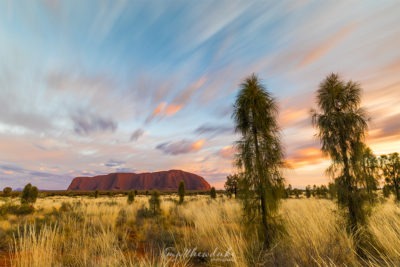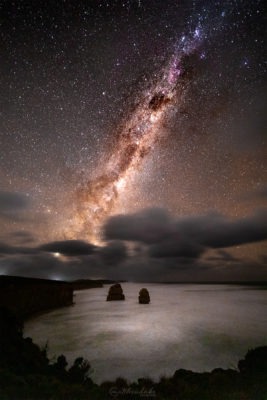Capturing Australia’s Diverse Landscapes: A Photographic Journey
November 26, 2023
Introduction: Australia’s landscapes are a photographer’s paradise, offering a spectrum of scenes from desolate deserts to verdant rainforests. Each terrain presents its unique challenges, making Australian landscape photography a fulfilling endeavour for photographers at all levels.
The Red Heart: Capturing Australia’s Deserts
The vast Australian Outback is characterised by its iconic red sands and sparse vegetation. The key to capturing its essence lies in understanding the play of light and shadow. Mornings and late afternoons are ideal for photography when the low sun accentuates the textures and colours of the landscape. Regions like the Kimberley and the Red Centre are prime examples of where the harsh sunlight can create dramatic, high-contrast images.
Coastal Wonders: Seascapes and Beach Photography
Australia’s coastline stretches over thousands of kilometres, featuring some of the world’s most breathtaking beaches and rugged cliff lines. Capturing the dynamic interplay between land and sea can be as challenging as it is rewarding. Iconic locations like the Twelve Apostles along the Great Ocean Road or the serene beaches of Byron Bay provide perfect subjects for practicing various techniques. Using a tripod for stability, photographers can experiment with long exposures to blur the movement of waves, creating a sense of tranquility. The timing of the shoot is crucial – capturing the coastline under different weather conditions and times of the day can dramatically change the mood and atmosphere of the photographs.
The Lush Green: Rainforests and Waterfalls
In the dense, green heart of Australia’s rainforests, the play of light and shadow creates a mystical ambiance. Photographing these environments, such as the Daintree Rainforest in Queensland or the Tarkine in Tasmania, offers an opportunity to capture the intricate details of nature. A macro lens can be invaluable for highlighting the delicate patterns of foliage or the droplets of water on leaves. When photographing waterfalls, a neutral density filter can be used to achieve slower shutter speeds without overexposing the image, creating that classic smooth water effect.
Urban Landscapes: Cityscapes in the Wild
Australia’s urban landscapes blend modern architecture with natural backdrops, offering a unique challenge for landscape photographers. Cities like Sydney, with its iconic Sydney Harbour Bridge and Opera House, or Melbourne’s Yarra River, provide opportunities to explore the interplay of natural and artificial light. Night photography in urban settings requires a good understanding of exposure settings. A tripod is essential for long exposures, capturing the movement of lights and creating a vibrant energy in the images. Experimenting with reflections on water bodies can add an artistic dimension to urban landscapes.
The Changing Colors: Photography in the Bush
Australia’s bushland is a dynamic and diverse environment. Places like the Blue Mountains in New South Wales or the Grampians in Victoria offer a spectrum of photographic opportunities throughout the year. The bush is particularly captivating during the changing seasons; autumn transforms the landscape into a tapestry of reds and oranges, while spring brings an explosion of new life and vibrant greens. Wildlife photography can also be rewarding in these areas, though it requires patience and a good telephoto lens to capture animals in their natural habitat without disturbance.
Tips for Aspiring Landscape Photographers
- Understanding light is the most critical element in landscape photography. The golden hour, just after sunrise or before sunset, offers soft, warm light ideal for landscapes.
- Composition is key. Use techniques like the rule of thirds or leading lines to create compelling images.
- Experiment with different filters, like polarisers or neutral density filters, to manage challenging light conditions and enhance colours.
- Always be prepared for changing weather conditions, especially in unpredictable environments like the coast or highlands.
- Research your location beforehand. Understanding the geography and typical weather patterns can help in planning your shoot.
Conclusion: Australian landscape photography is an ever-evolving journey. Each location, with its unique character and challenges, offers a canvas for photographers to tell a story through their lens. The diversity of the Australian landscape provides endless opportunities for creativity and exploration. Where are you going to visit to take your next photograph?


